In the autumn of 2023, Barcelonaâs Sagrada Familia reached an important milestone.
Four of the towers on architect Antoni Gaudiâs huge cathedral were completed, leaving one more to build. The famously unfinished building has been under construction since 1882. Although the project is very much in its final phase, no firm date has been given for its completion.
Itâs possibly the most famous unfinished creation on the planet - but itâs not alone. ±«Óătv Bitesize takes a look at other acclaimed works which never quite crossed the finish line.
The Canterbury Tales
Geoffrey Chaucerâs chronicle of a group of pilgrims making their journey to Canterbury less of a chore by telling each other stories is one of the most celebrated in English literature.
Written between the late 1380s and Chaucerâs death in 1400, itâs also a work considered unfinished - largely based on the premise set out at the beginning of the story. The large group of 30 pilgrims, and a narrator, are on their way to Canterbury Cathedral when the storytelling contest is suggested, with the successful pilgrim earning a free supper. Each member of the group is expected to tell two stories on the way to Canterbury and a further two on the way back, meaning the finished work would have had contained something like 120 tales.
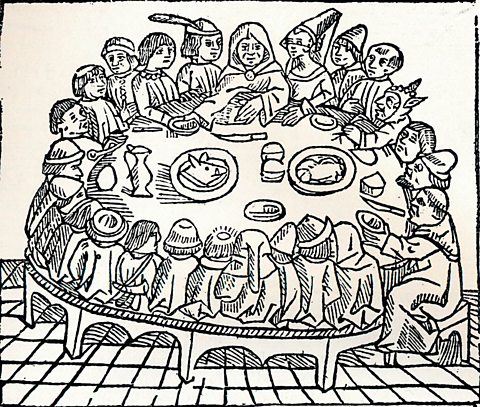
However, the work people read and study today consists of 24 tales. The pilgrims only make it to the outskirts of Canterbury on their outward journey and it is never decided which story wins the contest. Some of the pilgrims never even get to tell one of their stories, instead of the planned four. It is unclear why Chaucer did not finish the Tales before his death, but one suggestion is that the enormity of writing more than 100 different tales proved too daunting a task as time went on.
In the 15th Century, versions of the manuscript with additions and edits were in circulation - but never one which told all 120 tales.

Franklin D Rooseveltâs last official portrait
In April 1945, the artist Elizabeth Shoumatoff was invited to US President Franklin D Rooseveltâs retreat in the state of Georgia known as the Little White House.
While there, she began work on an official portrait of Roosevelt who, at that point, had been in the role since 1933 and was in his fourth term in office (a record that can no longer be repeated as US presidents have been restricted to a maximum of two terms since a law change in 1951). He was also unwell, suffering with breathing and heart issues.
Shoumatoff made progress on the painting over the course of three days, including preparatory sketches and snapshots of the president by the photographer Nicholas Robbins. This was not the first time Shoumatoff had painted Rooseveltâs portrait but it was the first life-size work of him she had been asked to create.
On the third day, Roosevelt collapsed while sitting for his portrait and died three hours later. The painting was unfinished and Shoumatoff, who hated any form of publicity and preferred people to know about her by word of mouth alone, did not enjoy the attention the sad situation created.
Shoumatoff did not want to profit from the painting and left it unfinished, donating it to the Little White House Foundation. She later finished a second version of the portrait, entirely from memory, which was also donated to the Foundation.

The first Doctor Who story of the 1980s
In the autumn of 1979, the ±«Óătv sci-fi series Doctor Who began its 17th series. Lead actor Tom Baker was an enduring hit with viewers as the fourth incarnation of the Time Lord, as were his companions - Romana, played by Lalla Ward, and the robot dog K-9. That series was a collection of stories which included Daleks, an alien stealing the Mona Lisa painting in Paris, and monsters inspired by the Minotaurs of Greek legend.
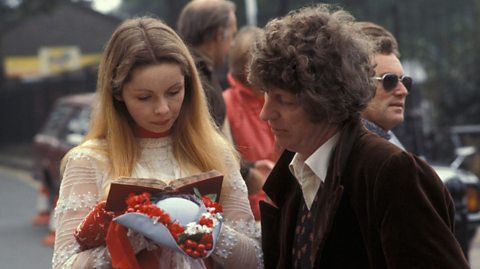
The intended final story of that series was called Shada and would be broadcast in six episodes from late January 1980. Based in and around Cambridge University for the most part, it was written by Douglas Adams, best known for his novel The Hitchhikerâs Guide to the Galaxy. Like many TV shows at the time, the cast and crew would carry out location filming first, with the remaining scenes shot at ±«Óătv Television Centreâs studios in London.
All was going well with Shada. Filming in Cambridge was completed - including the Doctor taking part in a bicycle chase through the city - as well as the first batch of studio scenes. When work was due to begin on the rest of the studio footage, industrial action at the ±«Óătv meant it could not take place. By the time the strike was over, it wasnât possible to complete Shada as shows intended for the forthcoming Christmas schedule took priority for studio space. The story was never broadcast in its intended form.
That wasnât quite the end of the story. Doctor Who fans remained curious about Shada and in the 1990s, the ±«Óătv released all of the storyâs existing footage, with Tom Baker filming links for the missing sections. Those gaps were later animated for a DVD release in 2017. The story has also been adapted as a novel, and a section of the Cambridge filming was used in the 1983 story The Five Doctors when Tom Baker was unable to take part. Douglas Adams even re-used parts of the plot in his 1987 novel Dirk Gentlyâs Holistic Detective Agency. For something that was never (officially) finished, there is a lot of Shada out there.
The National Monument of Scotland
In 1816, the idea was circulated that a monument in honour of Scottish troops who gave their lives fighting the Napoleonic wars would be a fitting tribute to their memory. Six years later, Calton Hill in Edinburgh hosted a ceremony to mark the foundations of the National Monument.
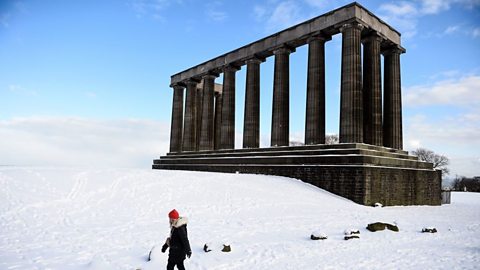
Ambitious plans for the National Monument would have seen a recreation of the Parthenon in the Scottish capital. Fundraising did not go as well as was hoped, with less than half of the required ÂŁ42,000 raised. Twelve columns were completed on the project before construction stopped in 1826, leaving the Monument looking as it does today.
At the time, the unfinished structure earned the nickname âNational Disgraceâ but as time has passed, the National Monument has become a very recognisable fixture of the cityâs skyline. It is now included in the UNESCO World Heritage Site status bestowed upon Edinburghâs old and new towns in 1995.
This article was first published in January 2024
Crowds, scones and baseball: Three times US presidents met a British monarch
From eating hot dogs at a picnic to catching a baseball game in Baltimore, ±«Óătv Bitesize explores three intriguing meetings between US Presidents and British monarchs.
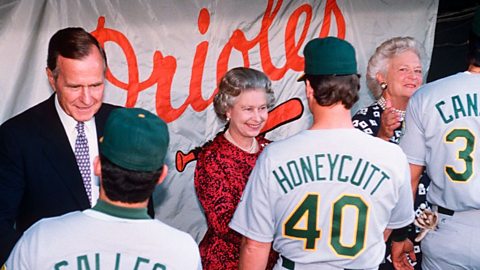
The curious parallels between Doctor Who and the headlines
How the Tardis took the Time Lord to miners' strikes, pollution and a world ruled by taxes
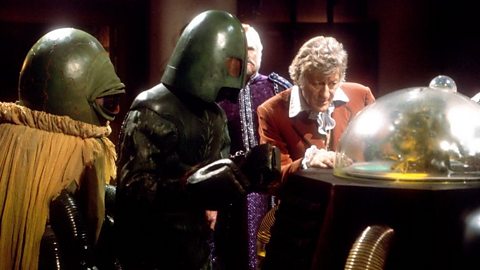
The landmarks under construction quiz
Can you identify these famous structures - even before they were completed?
